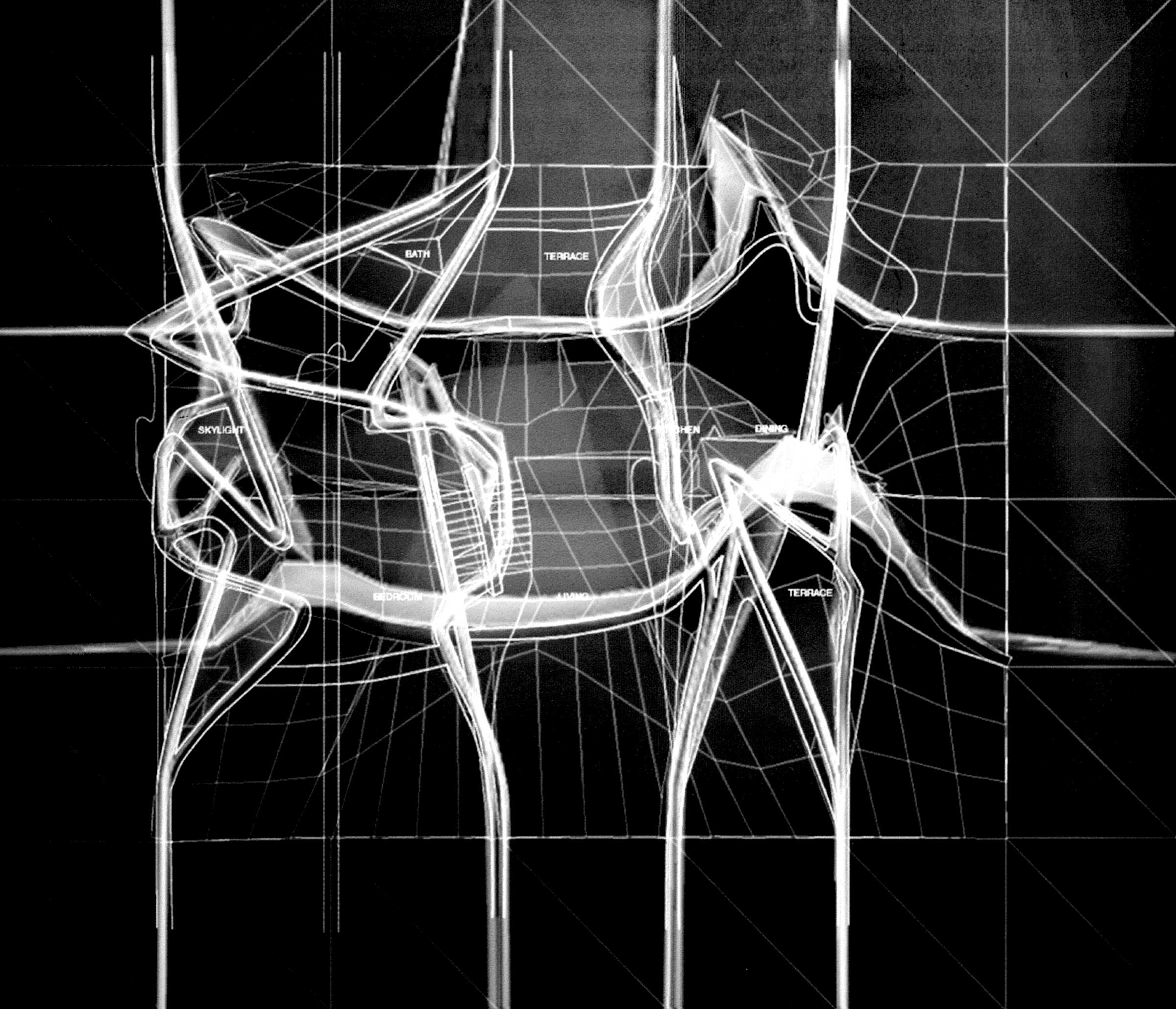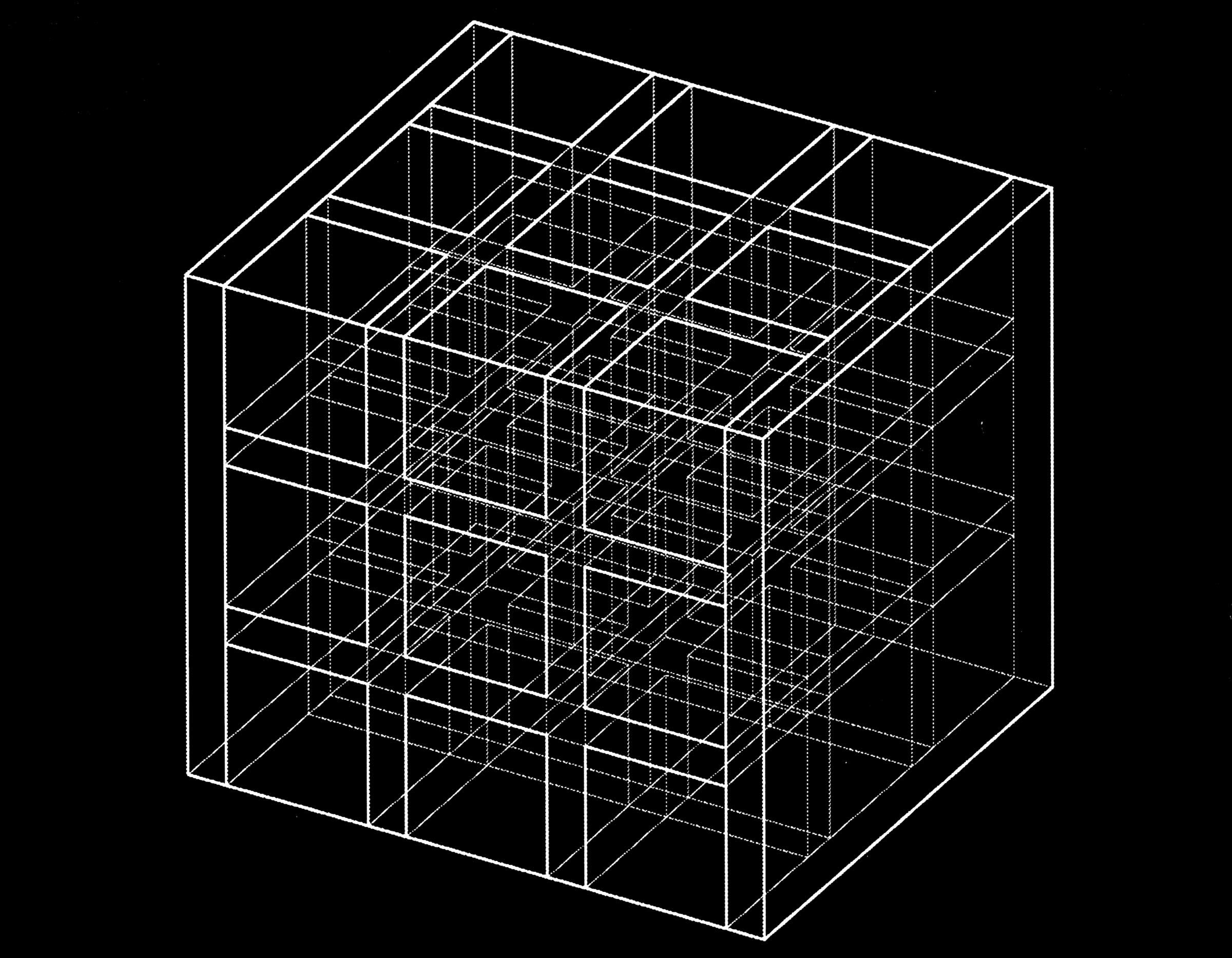
VIRTUAL HOUSE
Location: FSB – Franz Schneider Brakel, Berlin
Year: 1997
The
Virtual House begins from the memory of the spatial concept of an earlier house
by Peter Eisenman, for which he wrote a text in 1987 titled “The Virtual
House.” First the house is abstracted into nine cubes. These nine cubes
constitute a potential field of internal relations and conditions of
connectivity. Each potential connectivity can be expressed as a vector. Each
vector is attributed with a field of influence actualizing its virtual movement
through time. This actualization is visualized through an effect of each single
vector on the lines within its field of influence. The lines themselves, with
their geometric properties, become forces. For each vector, attributes were set
arbitrarily in order to describe its field of influence. The movements and
interrelations were produced by these attributes, now seen as constraints,
which influence the location, orientation, direction, and repetition of any
vector within the space. These constraints operated as local forces upon each
other. Each constraint acts and reacts according to three field of influence –
points, orientation, and direction. The condition of each vector is recorded,
either unconstrained or constrained, within the space as a series of traces.
The connectivity of the cube is repeatedly read through the vector lines. Due to the constraints resulting from the relation of the nine cubes, the once symmetrical readings are deformed to a condition marked by unpredictable change within each repetition. Each actualization is a single instant in time. Thus the result is not one of expression or representation but only reveals the process of becoming.
Use of the notion of the virtual in architecture risks literally materializing the immaterial. Therefore, one needs to address the productive making, or the condition of the virtual within architecture, in order to allow architecture to question traditional ideas of form and space.
The connectivity of the cube is repeatedly read through the vector lines. Due to the constraints resulting from the relation of the nine cubes, the once symmetrical readings are deformed to a condition marked by unpredictable change within each repetition. Each actualization is a single instant in time. Thus the result is not one of expression or representation but only reveals the process of becoming.
Use of the notion of the virtual in architecture risks literally materializing the immaterial. Therefore, one needs to address the productive making, or the condition of the virtual within architecture, in order to allow architecture to question traditional ideas of form and space.
Concept


Drawings









Model photos

